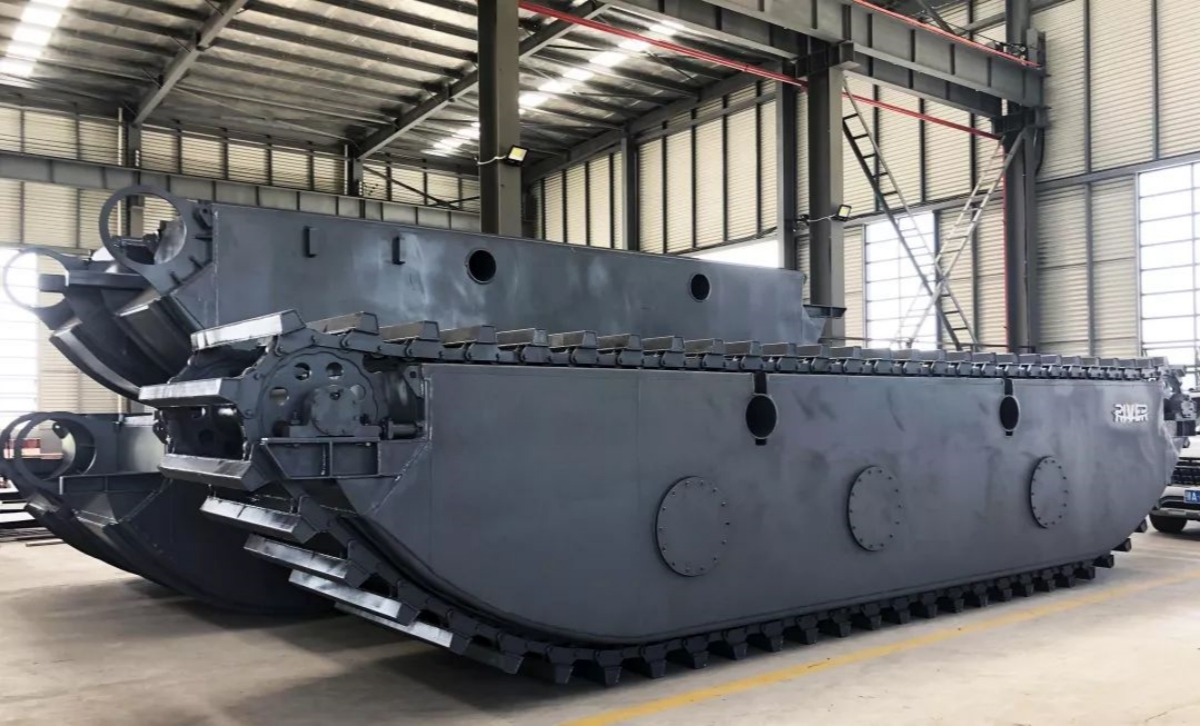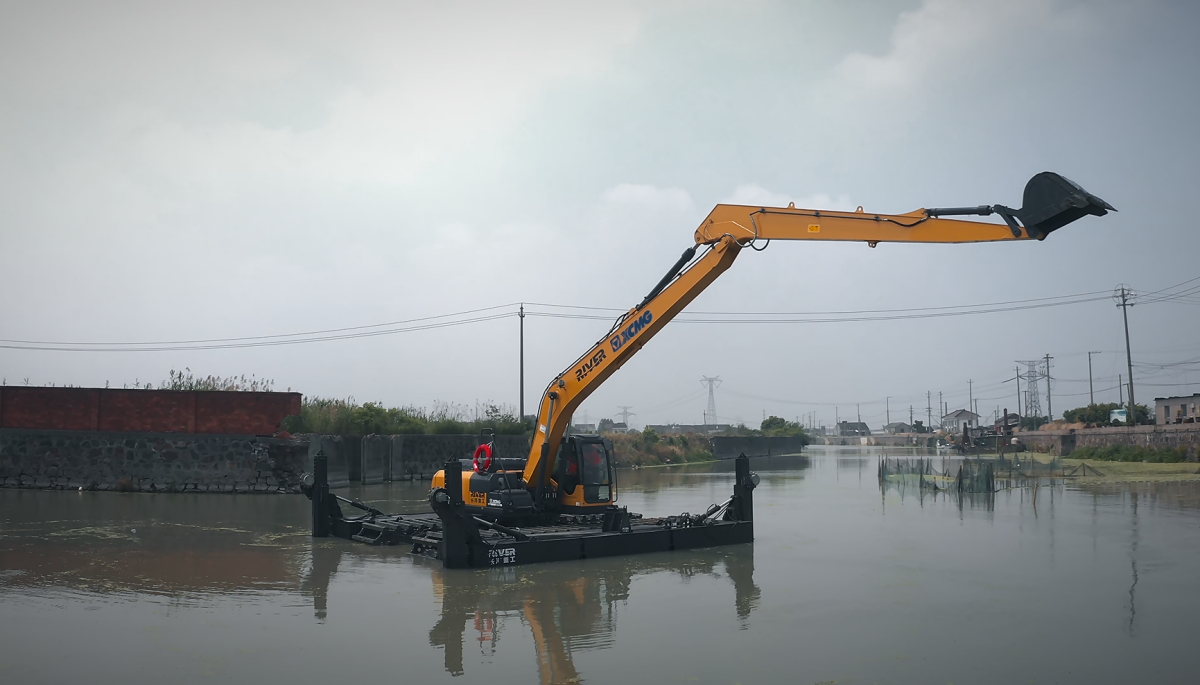In the aquaculture industry, clear and high-quality water is essential for the healthy growth of fish. However, over time, a significant amount of sludge accumulates at the bottom of fish ponds. This sludge depletes oxygen in the water, breeds harmful bacteria, and releases toxic gases such as hydrogen sulfide, directly threatening farming profitability. Traditional dredging methods are inefficient, costly, and pose safety risks. The emergence of the “invisible assistant”—the amphibious excavator—has provided an efficient sediment removal solution for modern aquaculture farms. When combined with equipment like swamp buggies, it can better handle complex environments.
How do amphibious excavators adapt to challenging terrains?
The most outstanding feature of amphibious excavators is their superior terrain adaptability. Equipped with wide tracks and pontoon systems, they can move and operate steadily on water surfaces, marshes, muddy areas, and even shallow waters. There is no need for draining or building temporary roads, as work can begin directly in the water, significantly reducing preparation time and improving efficiency. This amphibious capability makes them highly effective for wetland excavation and swamp transportation.

How can precise dredging be achieved while protecting the pond structure?
With extended booms and buckets of various specifications, amphibious excavators can accurately cover every corner of the pond. Operators can precisely control the depth and scope of dredging, effectively removing harmful sludge while avoiding damage to the original pond structure. This refined operation is crucial for maintaining the ecological balance of the pond.

How do amphibious excavators improve efficiency and reduce costs?
Powered by robust hydraulic systems and rationally designed structures, amphibious excavators deliver impressive digging force and operational efficiency. A single machine can replace dozens or even hundreds of manual laborers, significantly shortening the dredging cycle and saving valuable time for farming operations. Moreover, labor costs and intensity are greatly reduced. The use of amphibious transport vehicles can further enhance sediment transfer efficiency.

How can dredged sludge be repurposed as a resource?
The dredged sludge is far from worthless. Amphibious excavators can easily transfer it to designated areas. Rich in organic matter, this sludge can be processed into high-quality fertilizer for farmland and orchards, achieving waste resource utilization and truly “turning waste into treasure.” This eco-friendly approach also aligns with the principles of sustainable agriculture.
Why are amphibious excavators a revolutionary tool for aquaculture farms?
As the “invisible assistant” in aquaculture, amphibious excavators have revolutionized traditional dredging methods with their unique amphibious mobility, high operational efficiency, and precise control. They are not only powerful tools for ensuring water quality and improving farming profitability but also a driving force behind the modernization and intelligence of the aquaculture industry. Choosing an amphibious excavator means selecting an efficient and reliable expert for pond sediment cleaning !
